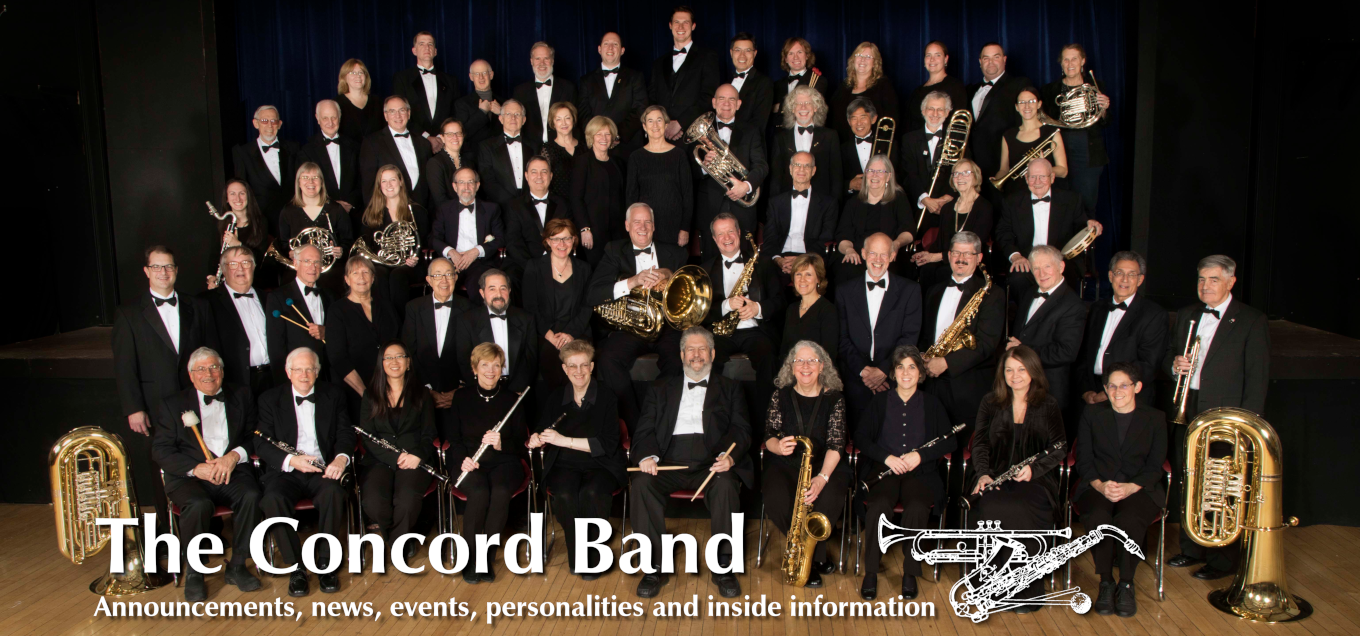Many concert attendees are familiar with the most frequently-played percussion instruments: timpani (set of four or five), bass drum, pair of crash cymbals and suspended cymbal, tam-tam (gong) snare drums of various depths, various kinds and sizes of tom toms, triangle, tambourine, maracas, wood block, sleigh bells and the principal members of the “mallets” family: the xylophone, glockenspiel (bells), vibraphone and chimes.
What we want to do in this article is to make you more familiar with a few of the more important among the less-often called-for percussion “accessory” instruments. (It’s not clear why these are referred to as “accessory”, but to call them “minor” might lead to confusion.) We include here only instruments that have been fairly often called for in music played by the Concord Band. To hear how these instruments sound, visit the Internet.
In no particular order: roto-toms (sets of one to five) may be thought of as a cross between timpani and tom-toms. They have no shells (cylindrical components), but their heads can be tuned to a definite pitch by rotating them. Sometimes they are used as higher-pitched timpani; more often they are used as tom-toms.
 The guiro [we΄-ro] (Spanish for gourd)
is generally made from plastic these days,
but it continues to be most often used to
play an iconic Latin rhythm that takes advantage
of the instrument’s grooves.
The guiro [we΄-ro] (Spanish for gourd)
is generally made from plastic these days,
but it continues to be most often used to
play an iconic Latin rhythm that takes advantage
of the instrument’s grooves.The ratchet can be hand-held or clamped to the rim of a bass drum. When the handle is turned, the thin strips of wood are vibrated by the ridges in the rotating drum, producing a buzzing sound.
 Traditionally, claves [clah΄-vays] are two solid rosewood cylinders
that are struck together using a particular
stationary grip for the lower clave.
This assures that the sharp, distinctive
sound of the Latin rhythms played on
them isn’t muffled.
Traditionally, claves [clah΄-vays] are two solid rosewood cylinders
that are struck together using a particular
stationary grip for the lower clave.
This assures that the sharp, distinctive
sound of the Latin rhythms played on
them isn’t muffled.The bell tree is a stack of isolated concentric brass cups usually played with two brass beaters pressed inward while they are moved downward or upward to produce a sequence of increasing or decreasing indefinitely pitched bell-like sounds.
The dollar value of the Concord Band’s extensive array of percussion instruments is substantial, but it has been collected over many years. Some instruments have been donated and some have been obtained through grants. All of the instruments are shared with the Concord Orchestra, and some have been purchased jointly.
 Dan Diamond is the senior member of the Concord Band, having joined the ensemble in January, 1970. He is a percussionist who began his lifelong love affair with the snare drum 63 years ago. His is also the founder/ editor of our newsletter, Notes from the Concord Band.
Dan Diamond is the senior member of the Concord Band, having joined the ensemble in January, 1970. He is a percussionist who began his lifelong love affair with the snare drum 63 years ago. His is also the founder/ editor of our newsletter, Notes from the Concord Band.





